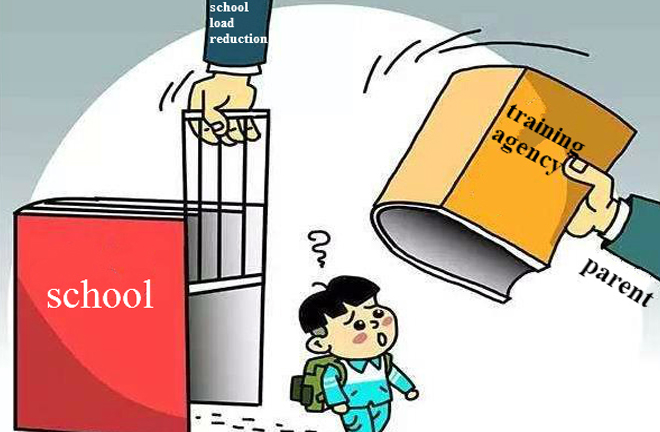To reduce student workloads, society must rethink attitudes on education

Governments have required schools to take steps to reduce schoolwork. But it has been offset by an increase in extracurricular study at private training agencies.
Some armchair experts and voices from the public have created the illusion that British and American students can perform well while receiving an advanced, stress-free and happy education. In fact, the students in many private schools and public schools handle a workload that is no lighter than that of their Chinese counterparts. No one in the world can achieve excellence without hard work.
Influenced by traditional culture, most Chinese parents have high expectations for their children, so a heavy school load seems inevitable. The ideal approach is for schools to adopt various measures to reduce the excessive study load and psychological pressure, such as improving the quality of instruction and educational efficiency. However, some schools have overreacted to the proposal by canceling all homework, which worried parents who want their children to perform better. Some schools have even canceled regular mid-terms or final exams, or taking “happy exams” only, as the test results won’t be released.
In recent years, governments have required schools to take steps to reduce schoolwork. But the reduction in workloads on campuses has been offset by an increase in extracurricular study at private training agencies, leading to a boom in the educational industry. Revenue of Xueersi, a Beijing-based training agency, achieved an average growth rate of 646 percent per fiscal year between 2012 to 2017 and its market value has increased nearly tenfold in the past three years, according to its annual report. Its number of users was 820,000 in 2013 and the figure surged to almost 4 million in 2017. This is not a coincidence. Another training giant New Oriental shifted its main business from test preparation for studying abroad to primary and secondary school training in 2016.
These changes help us to gain a better understanding of the necessary school load. Furthermore, extracurricular training requires money. Reductions to the in-school workload put a fair education increasingly out of reach by expanding education gaps between the rich and the poor. This is not what we expected.
The pursuit of better education is reasonable, but it is problematic to be utilitarian in this process, such as creating franchises of renowned schools. The heavy study load is only a symptom of a wider problem.
Many people argue that parents are forced to enroll their children in training centers due to China’s exam-oriented educational mechanism and a shortage of excellent resources. However, this explanation may not be adequate. There are more than 400 training schools in New York and their establishment coincided with the arrival of Chinese immigrants, according to an American media report. The annual revenue of a training agency run by a Chinese American has exceeded $10 million with a focus on tests and entrance exams. Also, it is groundless to say that the heavy school burden and allocated school districts result from a maldistribution of excellent resources. An absolutely balanced resource distribution is impossible. The concept of school districts based on residential patterns originated from the United States whose quality of schools varies even though the country is highly developed.
Indeed, many parents are forced to add workload to their children, worrying they may fail to get good jobs or earn a bright future if they can’t get admitted into excellent schools against the backdrop of expanding social stratification and income gap. Chinese parents are overwhelmed by collective anxieties, thus putting a greater load on their offspring. In this context, education is not to be blamed. Everybody intends to win the future social competition through education. In other words, education is used to tackle a range of sophisticated social problems. Criticism is unavoidable.
The difficulty of exams has no direct connection with school load, but it was also included as part of strategies to lessen the study burden. Reduced difficulty, which can be seen in stereotyped and simpler exams, will probably encourage exam-oriented education, thus inviting greater school load.
Gaokao, China’s university entrance exam, is an example where no training agency can help students achieve much higher scores. An ideal exam would be one in which students could not improve performance through repeated practice, which is the biggest achievement in reducing student’s academic burden. We should also avoid seeking absolutely easy school work or imitating some Western countries’ measures that have been proved wrong or doubtful.
We should stick to reducing students’ school load while finding a proper way to achieve the goal. First, we should recognize and support legitimate pursuits. Also, we should consider how to improve teaching quality and school management, which are the fundamental ways to tackle the issue. The key point is to eliminate the unnecessary homework. For example, the recent policy bans training agencies from teaching lessons prior to school education. Schools cancel independent enrollment of students with artistic talent. These moves deserve applause.
We need a long-term plan that focuses on changing parents’ attitudes toward education. Driven by utilitarian purposes, parents place too much expectations on their children. The public opposition to relieving the burden of schoolwork provides a good chance for us to reflect and promote more targeted measures to lessen the workload of students.
(edited by MA YUHONG)
